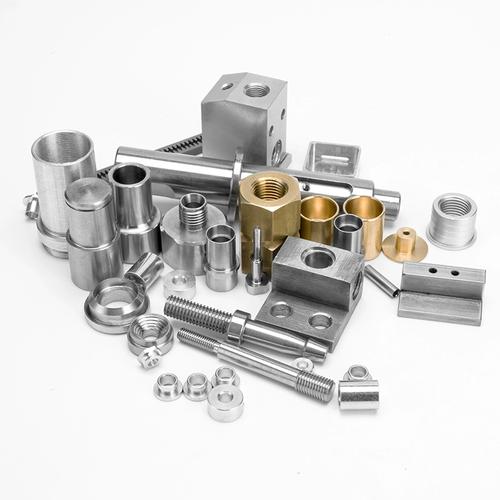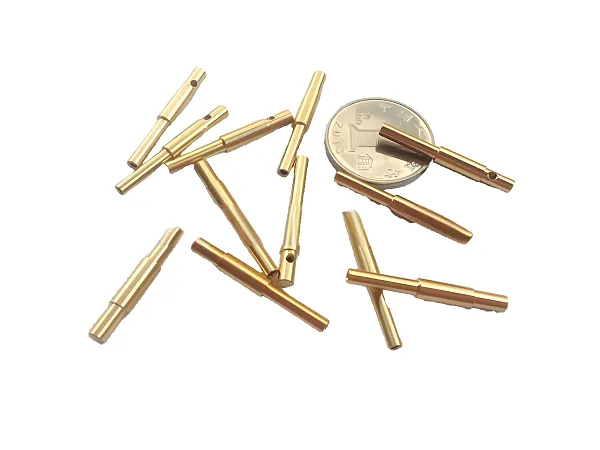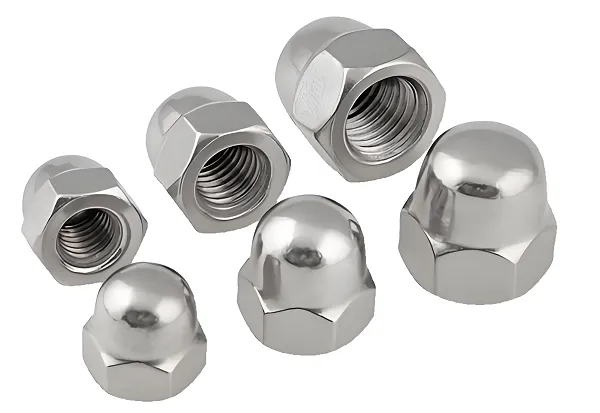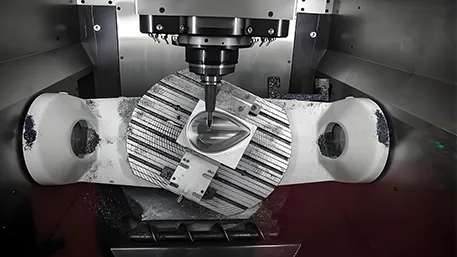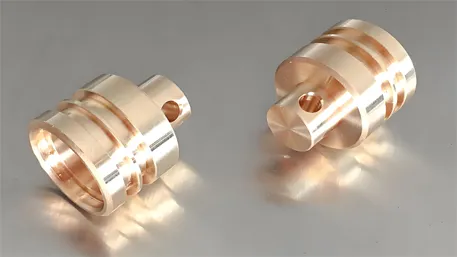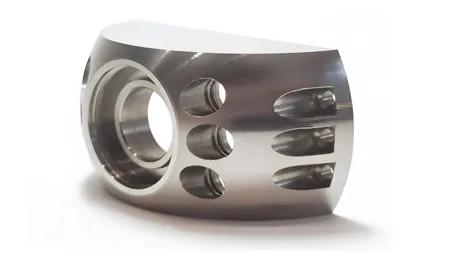In the aerospace field, the precision and performance of metal parts directly affect the safety, power efficiency, and service life of aircraft. With the development of aviation technology towards high – speed, lightweight, and long – life directions, CNC (Computer Numerical Control) processing technology, with its excellent precision manufacturing capabilities and material adaptability, has become the core technical support for customizing aeronautical metal parts. This article will systematically analyze the technical logic and engineering value of customized CNC precision aeronautical metal parts from dimensions such as technical advantages, materials engineering, processing technology, quality control, and industry applications.
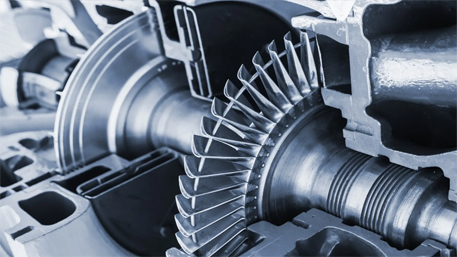
I. Core Advantages of CNC Technology in Customizing Aeronautical Metal Parts
CNC technology provides three core supports for the processing of aeronautical metal parts through digital control and multi – axis linkage capabilities:
- Sub – micron – level Precision Assurance
The positioning accuracy of CNC machine tools can reach ±0.005mm, the repeat positioning accuracy is ±0.01mm, and the surface roughness Ra≤0.4μm. For example, when processing aero – engine turbine blades, the profile error of the blade can be controlled within ±0.02mm, ensuring aerodynamic performance and reducing fuel consumption. - Full – dimensional Machining Ability for Complex Structures
Five – axis CNC equipment can achieve the machining of spatial curved surfaces, thin – wall structures (wall thickness ≤ 0.3mm), and micro – features that are difficult to complete with traditional processes. For example, the complex cooling channels of aero – engine combustion chambers can be formed in one – step through five – axis milling, avoiding the accumulation of errors from multiple processes. - High Compatibility of Materials and Processes
CNC technology is compatible with special aviation materials such as titanium alloys (TC4, TA15), aluminum alloys (7075, 2024), superalloys (Inconel 718), and stainless steels (316L). For different material characteristics, cutting parameters can be optimized: when processing titanium alloys, a strategy of low – speed rotation (600 – 1200r/min) and high – feed (0.1 – 0.2mm/z) is adopted, combined with high – pressure internal cooling tools, which can extend the tool life by 3 times; when processing aluminum alloys, through high – speed cutting (HSC) technology, with a rotation speed of 15000r/min and a feed rate of 2000mm/min, the efficiency is increased by 40%.
II. Materials Engineering and Selection Strategies for Customizing Aeronautical Metal Parts
Material selection is a crucial link in customizing aeronautical metal parts and needs to be combined with the functional and working condition requirements of components:
- Balance of Lightweight and High Strength
- Titanium alloy (TC4) has a density of 4.5g/cm³ and a tensile strength of ≥895MPa. It can reduce weight by 40% while maintaining high strength and is suitable for key structural parts such as aircraft landing gears and wing main beams.
- Aluminum alloy (7075 – T6) has a tensile strength of ≥572MPa and a density only 1/3 that of steel. It is widely used in lightweight components such as fuselage frames and aircraft wheels.
- High – Temperature and Corrosion – Resistant Design
- Superalloy (Inconel 718) can serve for a long time at 650℃ with a tensile strength of ≥1290MPa and is used for high – temperature components such as aero – engine turbine disks and combustion chambers.
- Stainless steel (316L) has excellent corrosion resistance (PREN value ≥ 25) and is suitable for components prone to corrosion such as aircraft fuel systems and hydraulic pipelines.
- Special Function Requirements
- Copper alloy (H62) has excellent electrical conductivity and is used for connectors and wire terminals of avionics equipment.
- High – temperature ceramic coatings are combined with metal substrates to improve the high – temperature resistance and wear resistance of the part surface.
III. Innovation and Optimization of CNC Processing Technology
In response to the special requirements of aeronautical metal parts, CNC processing technology achieves a double breakthrough in efficiency and quality through the following technological innovations:
- Multi – axis Linkage Composite Machining
Through five – axis linkage, complex curved surfaces can be machined in one clamping. For example, for the three – dimensional profile and tenon of aircraft blades, the processing efficiency is increased by 70%, and the position accuracy reaches ±0.01mm, avoiding errors caused by multiple clampings. - High – Speed Cutting (HSC) Technology
When processing aluminum alloy components, the rotation speed can reach 20000r/min, the feed rate is 4000mm/min, the material removal rate is increased by 60%, and at the same time, cutting thermal deformation is reduced to ensure the dimensional stability of thin – wall parts (wall thickness 0.3mm). - Co – optimization of Tools and Parameters
- When processing titanium alloys, integral carbide tools (such as a 12mm diameter ball – nose end – mill) are used in combination with high – feed milling (HFC) technology. The cutting speed reaches 150m/min, and the tool life is extended by 2 times.
- When processing superalloys, CBN tools and high – pressure internal cooling technology are applied. The cutting temperature is reduced by 40% to avoid material hardening.
IV. Quality Control System for Customizing Aeronautical Metal Parts
To ensure that products meet the strict standards of the aerospace industry, customized CNC aeronautical metal parts need to go through a strict quality control process:
- Dimension and Geometric Tolerance Detection
- A coordinate measuring machine (CMM) is used for full – size scanning, and the tolerance of key dimensions (such as the blade profile) is controlled within ±0.01mm.
- Geometric tolerance detection: The roundness error is ≤0.003mm, and the perpendicularity is ≤0.01mm/m to ensure the assembly accuracy of components.
- Materials and Mechanical Property Verification
- Spectral analysis is used to confirm the material composition. For example, the aluminum content of TC4 titanium alloy needs to be ≥5.5 – 6.8%, and the vanadium content is 3.5 – 4.5%.
- Tensile tests, fatigue tests, and hardness tests are carried out to ensure that the mechanical properties meet the AMS (Aerospace Materials Specification) standards. For example, the yield strength of Inconel 718 is ≥1035MPa.
- Nondestructive Testing and Function Testing
- X – ray or ultrasonic testing is used to detect internal defects to ensure the structural integrity of aircraft fasteners and engine components.
- Dynamic balance testing: Dynamic balance correction is carried out on high – speed rotating components (such as turbine rotors), and the unbalance amount is ≤5g to ensure flight safety.
V. Industry Application Practices
- Aero – engine Components
- Customized Inconel 718 superalloy turbine disks, after five – axis CNC milling, have a dimensional tolerance of ±0.01mm, can serve for a long time at 650℃, and have a service life of more than 10000 hours.
- TC4 titanium alloy engine blades, through five – axis milling and electrolytic polishing, have a surface roughness Ra≤0.4μm, and the fatigue strength is increased by 30%.
- Fuselage and Landing Gear Systems
- The 7075 aluminum alloy fuselage frame, after CNC high – speed cutting, reduces weight by 35%, and at the same time, the tensile strength is ≥572MPa to ensure the structural strength of the fuselage.
- The TC4 titanium alloy landing gear piston rod, after CNC turning and surface strengthening treatment, has a hardness of HV350 or above, and the fatigue resistance is increased by 2 times.
- Avionics and Accessories
- The 316L stainless steel aircraft fuel pipeline, after CNC pipe bending and precision welding, has a pressure – bearing capacity of 30MPa, and its corrosion resistance passes the 1000 – hour salt – spray test.
- The copper alloy aircraft connector, after CNC precision turning, has a contact resistance of ≤5mΩ and a plug – in life of more than 10000 times.
VI. Frequently Asked Questions (FAQ)
-
What level of precision can customized CNC aeronautical metal parts achieve?
CNC processing can achieve a dimensional tolerance of ±0.005mm, a repeat positioning accuracy of ±0.01mm, and a surface roughness Ra≤0.4μm, meeting the requirements of high – precision components such as aero – engine blades and turbine disks. -
How to select suitable aviation materials?
It is necessary to select according to the functions and working conditions of components. For example, Inconel 718 is selected for high – temperature components, titanium alloys or aluminum alloys are selected for lightweight structures, and 316L stainless steel is selected for corrosion – resistant scenarios. -
How long is the production cycle for customizing aeronautical parts?
The production cycle depends on the complexity of the parts and the materials. Simple parts usually take 7 – 10 days, and complex components may take 15 – 30 days. Urgent customization is supported to meet emergency needs. -
Can CNC processing handle the special properties of aviation materials?
Yes, through optimizing tools, cutting parameters, and the cooling system, CNC technology can effectively meet the challenges of difficult – to – machine materials such as titanium alloys and superalloys, ensuring processing quality and efficiency. -
Is the cost of customizing aeronautical parts high?
Due to the special materials and high – precision requirements of aeronautical parts, the cost is relatively high. However, CNC technology can significantly reduce the unit cost by optimizing processes and reducing waste. In the long run, the cost – performance ratio is better than that of traditional processes.
Consult Now and Get a Tailored Solution!
Whether it is the high – precision turbine blades of aero – engines, the lightweight frames of the fuselage, or the high – strength piston rods of the landing gear, our professional team will rely on the high – precision advantages of CNC technology, combined with aviation materials engineering and process innovation, to provide you with a full – process customization service from design, processing to inspection. Click to leave a message, and let us use a rigorous technical system and reliable quality assurance to customize high – performance and high – safety metal part solutions for your aerospace projects, helping you achieve technological breakthroughs and industrial upgrades in the aerospace field!
Whether it is the high – precision turbine blades of aero – engines, the lightweight frames of the fuselage, or the high – strength piston rods of the landing gear, our professional team will rely on the high – precision advantages of CNC technology, combined with aviation materials engineering and process innovation, to provide you with a full – process customization service from design, processing to inspection. Click to leave a message, and let us use a rigorous technical system and reliable quality assurance to customize high – performance and high – safety metal part solutions for your aerospace projects, helping you achieve technological breakthroughs and industrial upgrades in the aerospace field!

